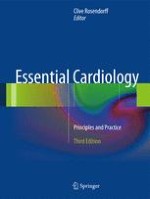Abstract
Improvements in control of cardiovascular risk factors, combined with advances in the pharmacologic and surgical management of patients with atherosclerotic vascular disease, have resulted in an age-adjusted decline in cardiovascular morbidity and mortality. This chapter reviews the major cardiovascular risk factors with a special emphasis on dyslipidemia. Non-modifiable risk factors include age, gender, and family history, and their impact can be lessened by lifestyle modifications to address obesity, hypertension, and dyslipidemia. In addition to dyslipidemia, hypertension and cigarette smoking are the major modifiable risk factors whose optimization has been shown to substantially reduce risk for cardiovascular disease. Dyslipidemia can be manifested as abnormalities in plasma levels of triglyceride-rich lipoproteins, low-density lipoprotein (LDL) cholesterol, or high-density lipoprotein (HDL) cholesterol. The National Cholesterol Education Program issues guidelines for the screening, diagnosis, and treatment of dyslipidemia. Risk assessment incorporates Framingham scoring and the presence of major risk factors to determine the necessity and intensity of pharmacologic therapy. Lifestyle modifications, including increased physical activity and dietary improvements, are key to reducing cardiovascular risk in both primary and secondary prevention. Drug therapy should be targeted at the lipid phenotype. Agents predominantly affecting LDL cholesterol include bile acid sequestrants, statins, and ezetimibe, while those that have a primary effect on triglyceride and HDL cholesterol levels are nicotinic acid and fibric acid derivatives. This chapter concludes with a discussion of cardiovascular risk factors in elderly and pediatric patients, women, individuals with obesity or metabolic syndrome, and patients with diabetes.
